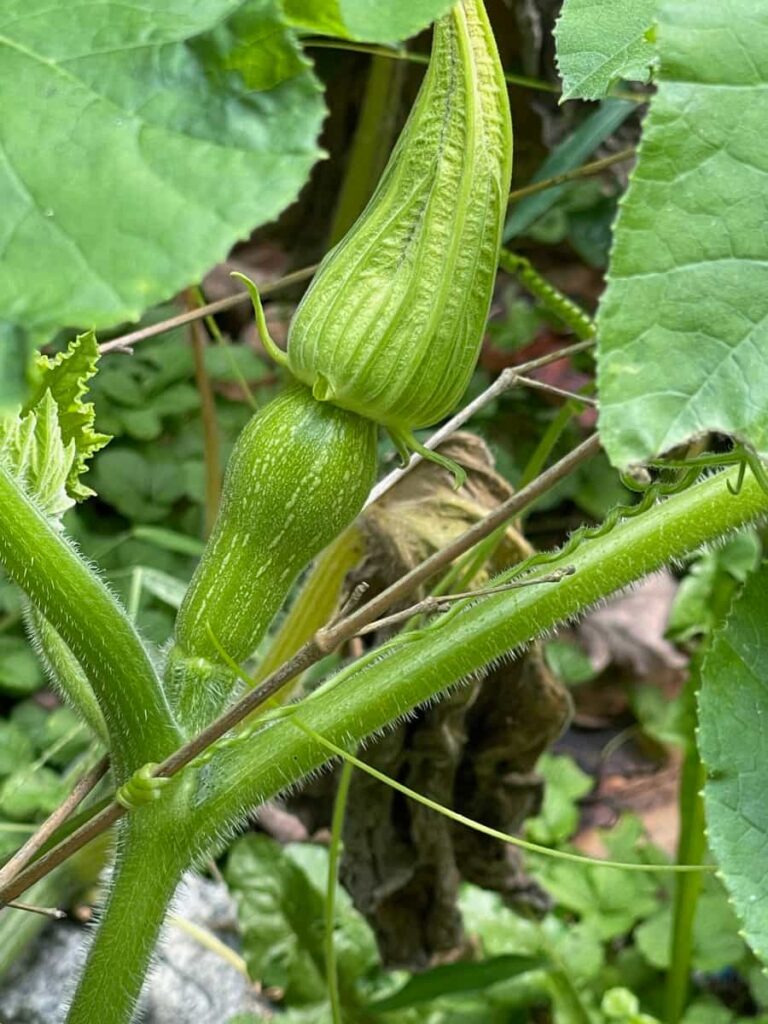Vegetables grown at home have been increasingly popular over the past few years. Eating more vegetables and reducing the family’s grocery expenses can be achieved with the help of a vegetable garden. Get your garden area planned out first. This is the time to use a planting calendar. Below we learn the Pennsylvania vegetable planting calendar, month-by-month vegetable gardening in Pennsylvania, different vegetables to grow in different seasons in Pennsylvania, and vegetable planting guide by zone in Pennsylvania.
Pennsylvania (PA) vegetable planting calendar
When should I plant my vegetable garden in Pennsylvania?
Many people who grow vegetables at home wait until Mother’s Day, a “magical,” typically frost-free milestone in May, to plant the entire garden. That makes sense if you’re mainly growing crops that thrive in warm temperatures, like tomatoes, cucumbers, peppers, and beans. To assure a great harvest, home gardeners in Pennsylvania should sow their crops in April or even late March, when temperatures are often normal.
Planting them in May or later will make them bitter and woody from the extreme summer heat if they mature. Some of the first vegetables to sprout are spinach, radishes, peas, carrots, lettuce, potatoes, broccoli, cauliflower, leeks, red beets, kohlrabi, cabbage, onions, and most greens.
When should I start my seeds in PA?
Pennsylvania has a long growing season so you can sow most annual seeds outside after the last frost date, and they will sprout, grow to maturity, and bloom before the temperature drops below freezing. Plants can fruit sooner by starting them indoors in the spring and moving them outside after the latest frost date.
What can I plant in March in PA?
Midway through the month of March is the ideal time to plant peas, fava beans, onions, leeks, garlic, greens (such as collards, kale, mustard, turnip, etc.), turnips, white potatoes, and cabbage. Plant leaf lettuce, radishes, beets, carrots, scallions, spinach, bok choy, and parsley toward the end of the month of March.
When should you plant tomatoes in PA?
The optimal time to grow tomatoes in Pennsylvania is between the end of April and the beginning of May. If you want to plant anything outside before Mother’s Day that is vulnerable to cold, remember that you are taking a chance. Therefore, planting tomato seeds around Mother’s Day is your best approach if you want to play it safe. Tomatoes can be planted as early as April if you have a temperate environment and the means to keep the plants warm and dry.
In case you missed it: Dairy Contract Farming in India: Companies, Agreement, Profits, How it Works and the Pros and Cons
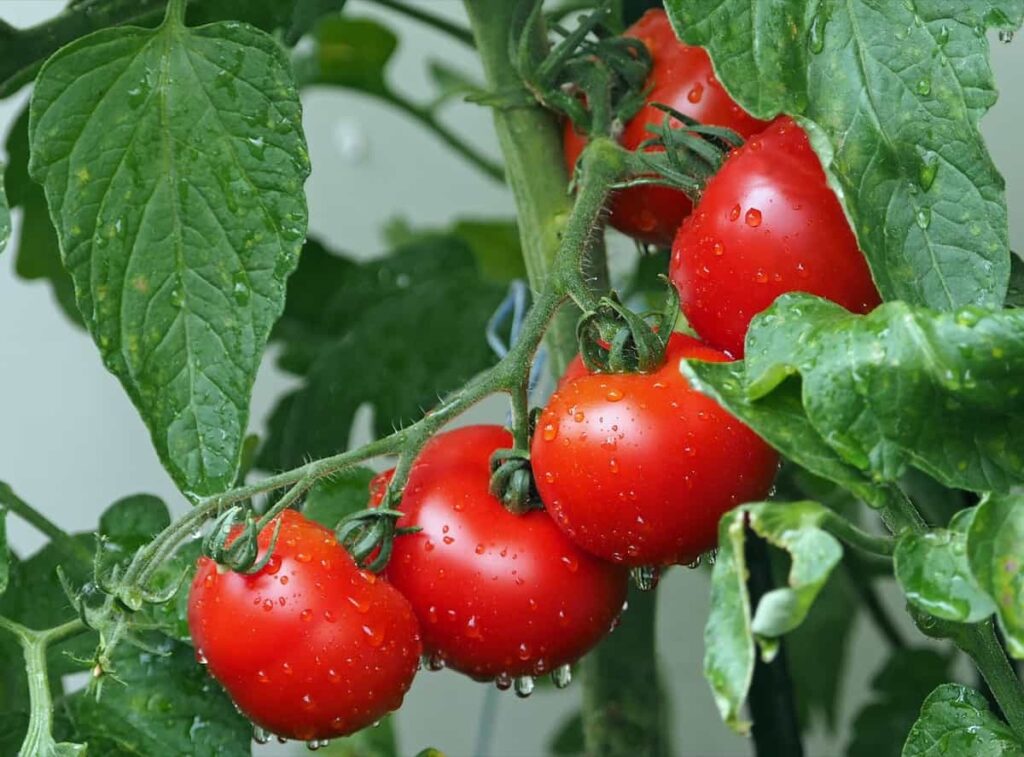
Due to its lengthy growth season, tomatoes can be harvested early, provided they are grown in a somewhat safe environment early in the year. Most growers recommend planting tomatoes in May for maximum harvests in August and beyond. Tomato seedlings can be planted starting in early to late February in Pennsylvania. You need to find a good indoor spot to grow these seeds.
The younger the plants, the more light they should be exposed to. If you have to grow lights, you can use them instead. You can utilize that space to grow the seed utilized. You have access to a window sill. Tomato planting times in Pennsylvania vary slightly depending on the specifics of your region’s climate. If you want to wait until your tomato plants are more established before moving them outdoors or into a larger pot, that’s okay.
You won’t be postponing the tomato harvest if you play it safe and maintain the plants in the pots; doing so will give their roots more room to grow. Waiting until the danger of a late frost has passed is recommended if planting fewer plants in a smaller container (such as four or three plants). Seedlings and young, sensitive tomato plants need special care because a cold night can kill them.
When can I plant lettuce in Pennsylvania?
It’s time to head outside for the first planting of salad greens now that the weather is warming up in the spring. Planting in the spring is most effective when done as early as possible. Lettuce is a cool-season crop, flourishing in temperatures between 60 and 70 degrees Fahrenheit daily. One more harvest is possible if you replant in the late summer.
When temperatures rise, lettuce stops growing as quickly as its leaves become bitter, sending up a long seed stalk. It’s a sign that your lettuce has “bolted” when you observe this. Your plants have reached their end of the season, so it’s time to pull them out, compost them, and plan to replant seeds later in the year.
Tap the seed packet gently to scatter around 20 seeds per square foot, then lightly cover with 1/8 to 1/4 inch of soil and firm firmly to plant the seeds in the ground. Water the sprinkles to ensure germination. For germination to take place, the seed coat needs to be moist. A rotten seed is a result of too much watering.
In case you missed it: Oregon Vegetable Planting Calendar: month-wise chart, guide, schedule for season, and zones

What vegetables are good to grow in Pennsylvania?
Only in the warmest parts of Pennsylvania okra will survive winter. Okra seeds are ideally planted in the early summer for a good harvest. If the temperatures at night continue to hover around or above 55 degrees Fahrenheit, then it’s a good time to start planting. Full sunlight and consistent watering are essential for okra’s rapid development. Almost all climate zones can grow onions now because of improved hybrid types.
All onion varieties thrive in soil with a pH between 6.2 and 6.8, which is rich in organic matter and has good drainage. In the spring, or whenever the soil temperature reaches 50 degrees Fahrenheit, sew onion seeds straight into the soil. Although sweet peppers are vulnerable to frost, they thrive in the warm summer months of Pennsylvania. Therefore, a huge crop can be expected in the fall if the faster-growing types are planted in the spring.
The seeds should be planted indoors in January, then transplanted after the soil temperature reaches at least 50 degrees Fahrenheit for the greatest results. Plant lettuce in spring and fall in hardiness zones 6-8A. It does well in dappled shade and can survive mild frosts. Lettuce is useful because it can be used as both a border and container plant. Bibb and Perella Red, two of the hardiest types, can survive temperatures as low as 4 degrees Fahrenheit, making them ideal for growing in Pennsylvania.
What planting zone is Pennsylvania?
Humid continental climates account for most of the state’s planting zones. Since the Southeast has a humid subtropical climate, the region enjoys warm temperatures all year. All parts of the state become wet at some point during the year and have rainy and humid summers and mild winters despite the wide range of climates. More than a hundred inches of snowfall is usual in the western section of the state each winter.
While the north and west enjoy milder temperatures, shorter days, and lesser humidity in the summer, the south and east endure blistering heat and constant sunshine. In much of the state, fall is a season characterized by mild and pleasant weather. Although tornadoes occur frequently, they typically do not inflict significant destruction. While planting zones 6b and 7a account for the vast majority of the state, a few areas in zones 5a and 7a expand the state’s region slightly.
You can know your planting zone with the help of an online hardiness zones map. If you live in a low-hardiness zone, it’s important that you only plant hardy plants. Only choose plants with a rating of 1 to 6 if you live in zone 6a, as those have the best chance of surviving. Many plants can thrive in Pennsylvania’s planting zones. Onions, broccoli, kale, lettuce, okra, sweet peppers, and Brussels sprouts are a few of the veggies that thrive in this climate.
How long do tomatoes grow in PA?
Depending on the kind of tomato, it can take anywhere from 40 to 60 days from the time the seed is planted until it is ready to be moved outside and planted in the garden. Find the date of the last average frost in your area to determine when you should sow tomato seeds inside. This will give you a particular date. After that, take sixty days off from that total.
When can I plant peas in Pennsylvania?
If you follow these guidelines, you should be able to grow peas successfully. It’s best to follow the correct growth instructions for the variety of peas you’re planting, which should be found on the seed packet or in a dedicated seed catalog. Plants’ spacing requirements, support requirements, maturity time, and succession planting can vary. The ideal pH range for soil is 5.8 to 7.0, which should be well-drained.
It takes between six and seventeen days for seeds to germinate when not soaked. The germination time can be reduced by soaking the seeds for 24 hours. Anywhere from 40 to 85 degrees, Fahrenheit is suitable for germination. In April, you can directly sow for a spring harvest. In August, gardeners sometimes sow seeds for their autumn harvest. Ensure the temperature is right for the seed’s growing zone and that you follow the guidelines.
Plant each row of seeds 1 to 2 inches deep and 1 1/2 to 3 inches apart. Leave 18 to 30 inches between the rows. Please refer to the cultivar’s growing instructions. If rain is insufficient, provide water at a rate of roughly 1 inch per week to ensure that plants remain healthy. Diseases could be prevented by watering the soil directly rather than the plant.
In case you missed it: North Dakota (ND) Vegetable Planting Calendar: Month-wise Season Chart, Schedule, and Guide for Zones
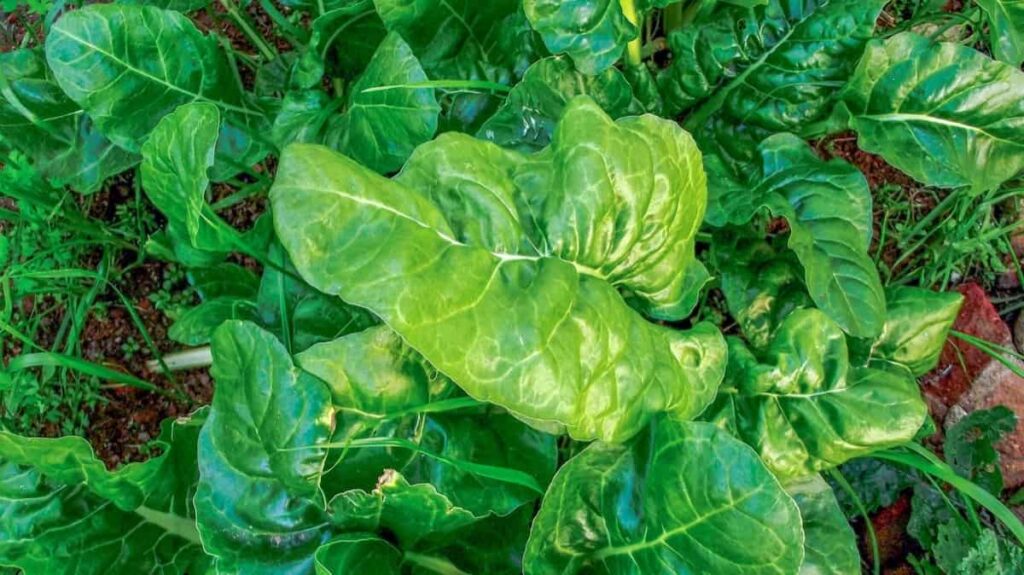
When can I plant spinach in PA?
The seeds of spinach should be planted when the soil is chilly. When planting spinach seeds, the ideal soil temperature range is between 450 and 680 degrees Fahrenheit. Spinach should be planted four to eight weeks ahead of the typical last frost date in the spring and six to eight weeks ahead of the average first frost date in the fall. It is possible to grow two harvests yearly. Growing spinach at home can be challenging, and many gardeners have given up because they waited too long to begin planting in the spring.
Learning how temperature affects spinach is essential for success. Cover the raised bed with a transparent polypropylene sheet for the first few weeks after spring planting to protect the seedlings from the elements. When it snows, rains, or ices over the plastic covering of the bed, the spinach stems won’t be damaged because of the structure that’s been set up over the bed. The plastic acts as a greenhouse, speeding up leaf development throughout the colder days of spring.
What can I plant now in Pennsylvania?
Spring vegetable planting in Pennsylvania
Many veggies and leafy greens can be grown when the weather gets warmer. They add a wonderful flavor to spring salads when combined with other springtime ingredients like tomatoes. Here are a few examples of springtime vegetables that are often grown: This includes a variety of veggies, such as asparagus, kale, green zucchini, leaf lettuce (red and green), radishes, romaine lettuce (red and green), spinach, spring onions, spring mix, sugar, peas, and yellow zucchini.
Fall vegetable planting in Pennsylvania
In the fall, vegetable yields tend to decrease, but there are still a great many fall vegetables that are ready to be grown. Broccoli, Brussels Sprouts, Cauliflower, Celery, Garlic, Green Cabbage, Kale, Potatoes, Red Beets, Red Cabbage, Sweet Potatoes, Turnips, and Winter Squash are some of the vegetables grown in fall.
Summer vegetable planting in Pennsylvania
The warm weather of summer provides an abundance of vegetables from throughout the state of Pennsylvania. The wetter and warmer weather of spring allows vegetables to thrive and grow to their full potential. Check out the many kinds of vegetables available during the summers, such as beets, carrots, cucumbers, green beans, garlic, kale, lettuce, bell peppers, potatoes, onions, spinach, summer squash, sweet corn, and zucchini.
In case you missed it: How to Grow Desert Roses: Varieties, Soil, Planting, Pruning, Fertilizers, and Care
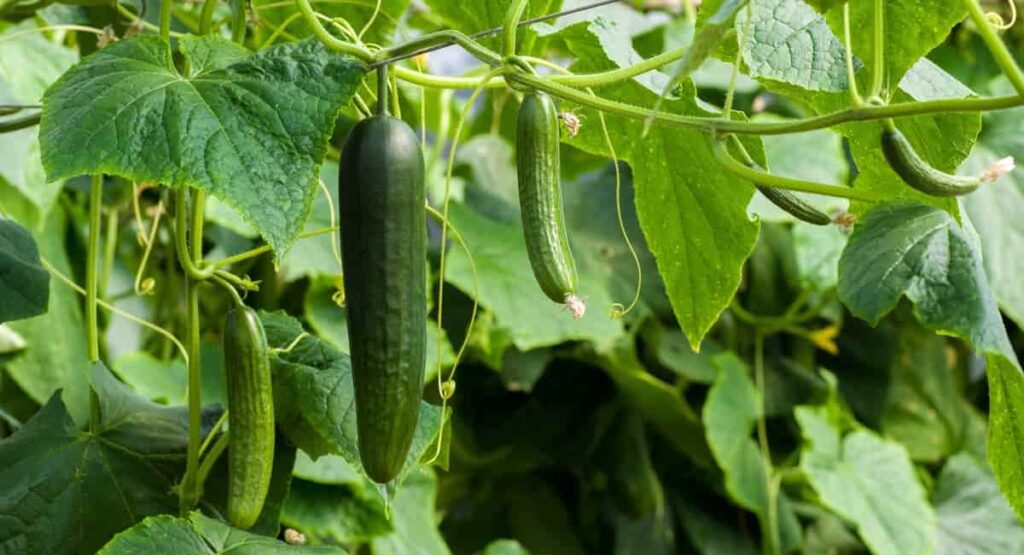
Winter vegetable planting in Pennsylvania
Many vegetable varieties aren’t available during winter, but this is an important harvest time for veggies. Root vegetables are at their peak in the cooler months. Some winter-available veggies in Pennsylvania are listed below. Vegetables include Brussels sprouts, cabbage, cauliflower, red beets, sweet potatoes, turnips, and winter squash.
Pennsylvania vegetable planting calendar/chart/guide/schedule
| Vegetables | Zone 5 | Zone 6 | Zone 7 |
| Snap Beans | Mid-May to Sep | May to Mid-Oct | Apr to Mid-Oct |
| Lima beans | Mid-May to Sep | May to Mid-Oct | Apr to Mid-Oct |
| Beets | Apr to June, Mid-July to Mid-Oct | Mid-Mar to June, Mid-July to Mid-Oct | Mar to May, Aug to Oct |
| Broccoli | Mid-Mar to June, July to Oct | Mar to Mid-June, Mid-July to Oct | Mid-Feb to May, Aug to Mid-Nov |
| Brussel Sprouts | Apr to Oct | May to Oct | Mid-Apr to Mid-Sep |
| Cabbage | Mid-Apr to Oct | May to Oct | Mar to Mid-June, Mid-July to Oct |
| Carrots | Apr to Jun, Aug to Mid-Oct | Apr to June, Aug to Oct | Mar to Mid-June, Aug to Oct |
| Cauliflowers | Mid-Apr to Mid-Oct | Mar to Mid-June | Mid-Feb to May, Aug to Mid-Nov |
| Corn | Mid-May to Mid-Sep | May to Sep | May to Aug |
| Cucumber | Mid-May to Mid-Sep | May to Sep | May to Aug |
| Kale | Apr to June, Mid-July to Oct | Mid-Mar to Mid-June, Aug to Mid-Nov | Mar to May, Aug to Mid-Nov |
| Lettuce | Mid-Apr to June, Mid-July to Mid-Oct | Mid-Mar to Mid-June, Aug to Oct | Mar to May, Aug to Oct |
| Onions | Apr to Sep | Mid- Mar to Aug | Mar to Aug |
| Peas | Apr to June, Mid-July to Mid-Oct | Mid-Mar to May, Aug to Oct | Mid-Feb to Mid-May, Mid-Aug to Mid-Nov |
| Peppers | Apr to Sep | Mid-Mar to Sep | Mar to Sep |
| Spinach | Apr to June, Mid-July to Oct | Mar to June, Mid-July to Oct | Mar to June, Aug to Mid-Nov |
| Summer Squash | Mid-May to Sep | May to Sep | May to Mid-Oct |
| Tomato | Apr to Sep | Mid-Mar to Sep | Mar to Sep |
| Asparagus | Apr | Apr | Apr |
| Artichokes | – | – | – |
| Celery | – | – | |
| Chard | – | – | – |
| Chives | – | – | – |
| Eggplants | May | May | Apr to Mid-May, Mid-July |
| Kohlrabi | Early Apr and late Sep | Early Apr and late Sep | – |
| Okra | Mid-May to late May | Mid-May to late May | Apr to June, Mid-June to July |
| Potatoes | Early April to Mid-April | Early April to Mid-April | Mid-Jan to Mar |
| Radish | Late Mar to early May | Late Mar to early May, Aug | Mid-Jan to Apr, Sep to Mid-Oct |
| Winter squash | May | Mid-May | Apr to Aug |
In case you missed it: Lavender Farming in Jammu and Kashmir: Excellent Profits With Purple Revolution Under Aroma Mission
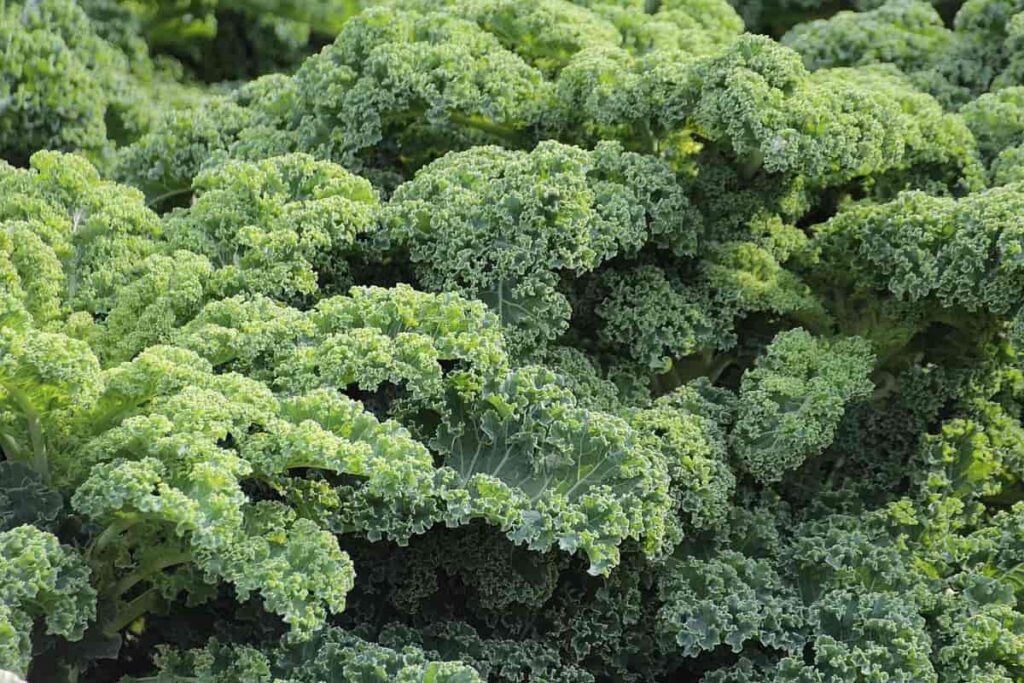
Conclusion
Your garden is now ready for you to start planting a wide selection of veggies in it. Protect your plants from frosts in winter and heat in summer by taking proper measures. Have fun gardening. If you live in the following cities, towns, and counties and plan to grow vegetables in Pennsylvania, this Vegetable Planting Calendar chart and guide will help you to set up your garden.
| Philadelphia | Jim Thorpe |
| Pittsburgh | Cranberry Township |
| Harrisburg | Lititz |
| Scranton | Lansdale |
| Erie | Downingtown |
| Allentown | Monroeville |
| Lancaster | Ephrata |
| Bethlehem | Collegeville |
| Wilkes-Barre | Camp Hill |
| Gettysburg | East Stroudsburg |
| West Chester | Quakertown |
| Altoona | Canonsburg |
| Johnstown | Grove City |
| Mechanicsburg | Phoenixville |
| State College | Coatesville |
| Williamsport | Shippensburg |
| Pottstown | Bensalem |
| Greensburg | Wyomissing |
| Chambersburg | Monaca |
| Stroudsburg | Conshohocken |
| Uniontown | Kennett Square |
| Hazleton | Ambler |
| Bloomsburg | Central Pennsylvania |
| King of Prussia | Western Pennsylvania |
| Doylestown | Northern Pennsylvania |
| New Hope | Estern Pennsylvania |
| Meadville | Southern Pennsylvania |
| Norristown |
- Crops Grown in Summer Season: Best Choices for Summer Gardening
- Organic Pest Control for Tomato Farming
- How to Maximize Sheep Farming Profit
- Broccoli Varieties: Choosing the Right Cultivars for Your Farm
- How to Raise Pigs in Your Own Backyard: A Comprehensive Guide
- Budget Friendly Sheep Shed Ideas: Cheap and Low-Cost Tips
- How Much Do Cattle Farmers Make: Revenue Streams in Cattle Farming
- Management Pests and Diseases in Your Cotton Field
- Sheep Farming Business Plan for Beginners
- Aquaponic Farming at Home: A Step-By-Step Guide
- Profitable Village Farming Business Ideas in 2024
- High-Yield Aquaculture: Fast-Growing Fish for Farming
- Effective Fish Pond Construction Techniques for Beginners
- Irrigation and Water Management in Pineapple Farming
- Blossom to Harvest: Mastering Flowering and Pollination in Papaya Farming
- Pig Fattening Essentials: From Selection to Sale for Beginners
- Raising Wagyu Cattle: A Complete Guide for Premium Beef Production
- Soil Types and Their Water Holding Capacity
- Optimizing Irrigation Schedules for Coconut Groves for Enhanced Yield
- Espresso Your Garden: Coffee Grounds for Healthier Acid-Loving Plants
- The Best Soil Mix for Snake Plants: How to Mix Your Own Snake Plant Soil
- Green Thumb Success: Expert Tips for Cultivating Greenhouse Beans All Year Round
- Bloom All Year Round: The Ultimate Guide to Indoor Hyacinth Care
- Eco-Friendly Gardening: How to Make Liquid Fertilizer from Kitchen Waste
- Ultimate Guide to Grow Anise in Pots: Explore Seed Propagation to Harvesting
- Guide to Raising Chester White Pigs: Discover Breed Facts to Growth Management
- Mastering the Elegance: The Ultimate Guide to Weeping Cherry Tree Care, Planting, and Maintenance
- Ultimate Guide to Planting Garlic in Grow Bags: Growing Strategies for Beginners
- How to Fix Spider Plant Leaf-Related Problems: Natural and Organic Remedies
- 10 Reasons Why Your Tulsi Plant is Shedding Leaves: Home Remedies and Solutions
- Optimizing Growth and Yield: The Advantages of Palm Bunch Ash Fertilizer
- Utilizing Neem Oil Extract as a Natural Pesticide for Hydrangea
- From Soil to Harvest: Various Ways in Which Farmers Can Use AI Tools
- Steps to Encourage and Induce Citrus Flowers: A Comprehensive Guide
- How to Fix Snake Plant Leaf-Related Issues: Natural and Organic Remedies
- Transform Your Garden into a Fragrant Oasis with Raat Ki Rani (Night Blooming Jasmine)

